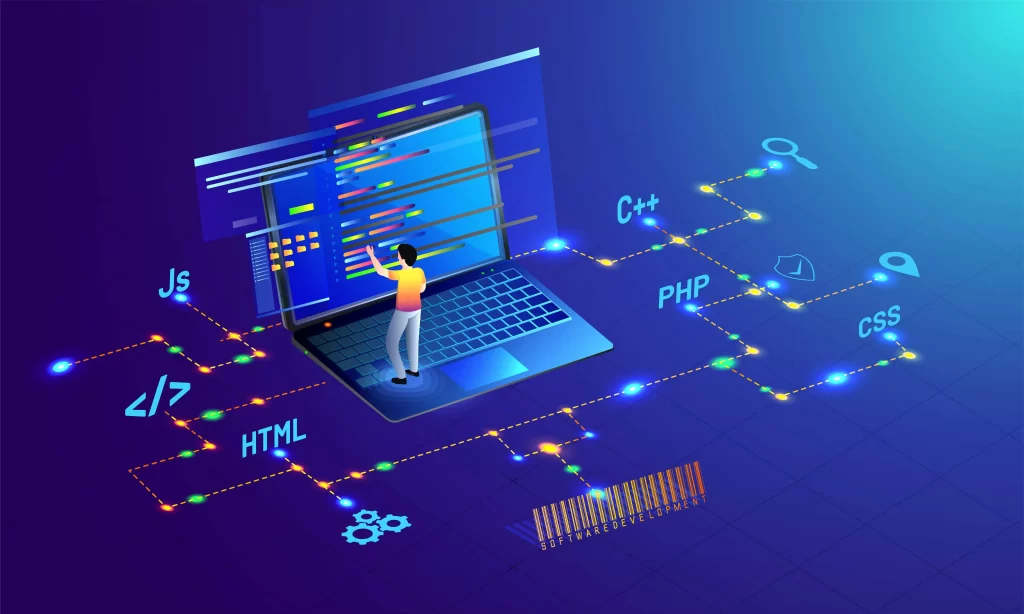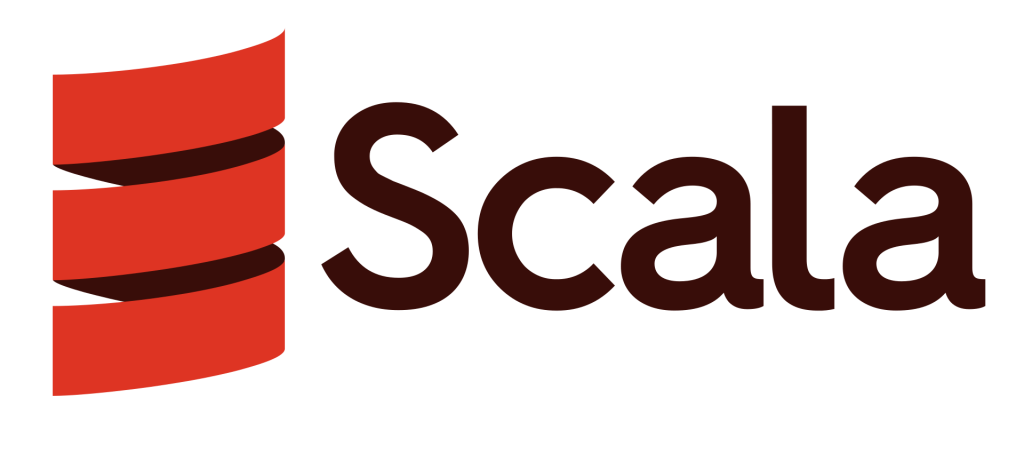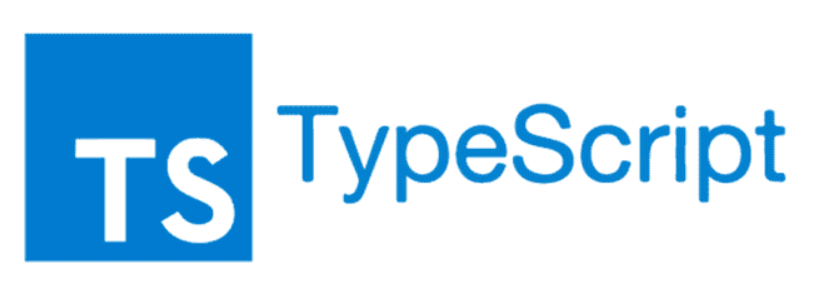The Ultimate Guide to Object-Oriented Programming
Object-Oriented Programming Languages: An In-Depth Guide

Object-oriented programming (OOP) is a way to design software using objects and classes. It’s very popular because it helps to model real-world scenarios and manage complex systems effectively. In this article, I will discuss what OOP languages are, their basic features, and the most important of the most widely used Object-Oriented Programming Languages (OOP) today.
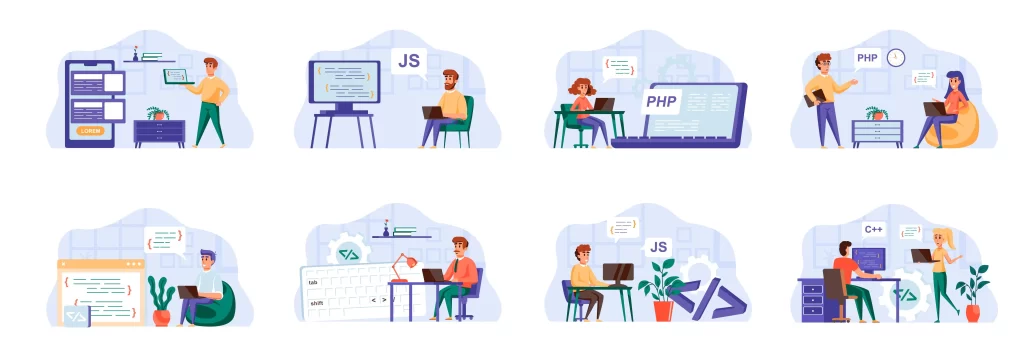
What is Object-Oriented Programming?
Object-oriented programming is based on the concept of “objects,” which are instances of classes. A class acts as a blueprint that defines the properties (attributes) and behaviors (methods) that its objects will have. OOP organizes code into reusable, modular components, making software development more efficient and easier to maintain.

Key Concepts of Object-Oriented Programming
Classes and Objects:
- Class: A template or blueprint that defines the properties and methods common to all objects of a certain type.
- Object: An instance of a class. Each object can have its own values for the properties defined by the class.
Encapsulation:
Encapsulation involves keeping an object’s internal state hidden from the outside. The object exposes only what is necessary through methods, protecting its state from unintended interference and misuse.
Inheritance:
Modern languages such as Scala and Kotlin blend object-oriented programming with functional programming concepts, offering a hybrid model that leverages the advantages of both paradigms.
Polymorphism:
Polymorphism enables objects from various classes to be treated as instances of a shared superclass. This is often accomplished through method overriding and interfaces, allowing one interface to represent multiple underlying data types.
Abstraction:
Abstraction hides the complex implementation details of a system and exposes only the necessary features. This simplifies interaction with objects and reduces complexity.
Challenges of Object-Oriented Programming
While OOP has many benefits, it also presents some challenges:
Complexity:
The use of multiple objects and classes can make the codebase more complex, especially for large projects. Proper design and planning are crucial to manage this complexity.
Performance Overhead:
The abstraction layers in OOP can introduce performance overhead. For instance, method calls in OOP can be slower than procedural programming due to the additional layers of abstraction.
You may also like this 👉 Top 100 List Of Programming Languages
Learning Curve:
For beginners, understanding OOP concepts such as inheritance, polymorphism, and encapsulation can be challenging. It requires a shift in thinking from procedural programming.
Over-Engineering:
There is a risk of over-engineering in OOP, where developers might create too many classes and objects, leading to unnecessarily complicated designs.
Best Practices for Object-Oriented Programming
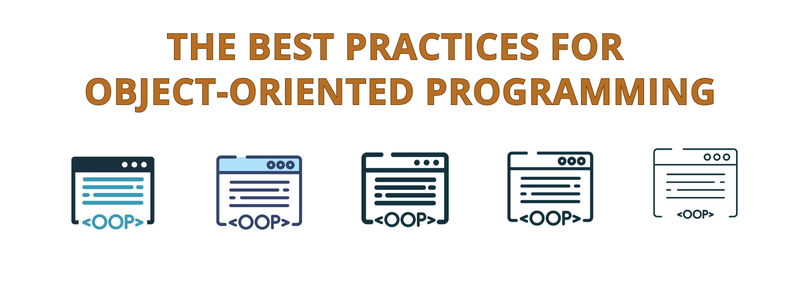
To maximize the benefits of OOP and mitigate its challenges, consider these best practices:
Follow SOLID Principles:
- Single Responsibility Principle: Each class should have a single purpose or responsibility. This means a class should change for only one reason, ensuring it focuses on one aspect of the functionality.
- Open/Closed Principle: Classes should be designed to allow their behavior to be extended without modifying their source code. This principle encourages building systems that can adapt to new requirements by adding new code rather than altering existing code.
- Liskov Substitution Principle: Objects of a subclass should be replaceable with objects of the superclass without affecting the correctness of the program. This ensures that a subclass can stand in for its parent class and be used reliably in its place.
- Interface Segregation Principle: Clients should not be forced to depend on interfaces they do not use. This principle promotes the creation of more specific interfaces so that implementing classes only need to be concerned with the methods that are relevant to them.
- Dependency Inversion Principle: Upper-level components should not be reliant on lower-level components. Instead, both should depend on abstract interfaces. Furthermore, these abstract interfaces should not be tied to specific details; rather, the details should be shaped by the abstractions. This principle seeks to minimize the dependency and tight coupling between different parts of a system.
Design for Reusability:
Create classes and methods that can be reused in different parts of the application. Avoid hardcoding values and dependencies.
Keep It Simple:
Strive for simplicity in your designs. Avoid creating overly complex hierarchies and unnecessary layers of abstraction.
Encapsulate Data:
Make sure that an object’s internal state is concealed from external access. Use accessors, such as getters and setters, to manage how the data is accessed and altered.
Use Composition Over Inheritance:
Prefer composition (using objects of other classes) over inheritance (extending other classes) as it leads to more flexible and maintainable code.
Future Trends in Object-Oriented Programming

Object-Oriented Programming (OOP) continues to evolve, adapting to new trends and technologies. Here are some future trends in OOP:
1. Integration with Functional Programming
- Hybrid Paradigms: Many modern languages, like Python, JavaScript, and Scala, support both OOP and functional programming. This hybrid approach allows developers to leverage the strengths of both paradigms.
- Immutable Data Structures: Increasing use of immutable data structures in OOP to enhance reliability and predictability, drawing from functional programming practices.
2. Microservices Architecture
- Decoupled Services: OOP principles are being applied to design microservices, where each service is treated as an independent object with its own state and behavior.
- Service-Oriented Design: Emphasizing encapsulation and modularity in service design, making systems more maintainable and scalable.
3. Enhanced Tooling and IDE Support
- Advanced Refactoring Tools: IDEs are providing more sophisticated refactoring tools that understand OOP principles, making it easier to restructure codebases.
- Intelligent Code Completion: Improved code completion and navigation features that recognize OOP constructs and provide context-aware suggestions.
4. Aspect-Oriented Programming (AOP)
- Cross-Cutting Concerns: AOP allows for separation of concerns by enabling behaviors that affect multiple classes to be defined in one place. This is particularly useful for logging, transaction management, and security.
5. Increased Emphasis on Design Patterns
- Pattern Repositories: Growing collections of reusable design patterns, making it easier for developers to implement robust and efficient solutions.
- Pattern-Oriented Languages: Languages and frameworks that natively support common design patterns, reducing boilerplate code.
6. Domain-Driven Design (DDD)
- Focus on Business Logic: Emphasizing the alignment of software design with business domains, promoting the use of OOP to model complex business processes accurately.
- Strategic Design: Using bounded contexts and aggregates to manage the complexity of large systems.
7. Machine Learning and AI Integration
- Modeling Complex Systems: Using OOP to create models that represent complex systems and behaviors in machine learning and AI applications.
- Data-Driven Design: Enhancing OOP with data-driven approaches to adapt and optimize systems based on real-time data.
8. Concurrency and Parallelism
- Actor Model: Integrating concepts from the actor model to handle concurrent operations more efficiently in OOP.
- Thread-Safe Designs: Developing thread-safe objects and leveraging concurrent collections to build responsive and reliable applications.
9. Increased Focus on Clean Code and SOLID Principles
- Code Readability: Emphasizing clean code practices to improve code readability and maintainability.
- SOLID Principles: Continued importance of adhering to SOLID principles (Single Responsibility, Open/Closed, Liskov Substitution, Interface Segregation, and Dependency Inversion) in OOP design.
10. Evolution of Programming Languages
- Language Innovation: Ongoing development of new programming languages and the evolution of existing ones to better support OOP, including enhanced type systems, better support for polymorphism, and more expressive syntax.
- Cross-Platform Development: Languages that support seamless cross-platform development, making it easier to apply OOP principles across different environments (e.g., mobile, web, desktop).
By staying abreast of these trends, developers can ensure they are using OOP in ways that align with the latest advancements and best practices in software development.
Additional Resources for Learning Object-Oriented Programming
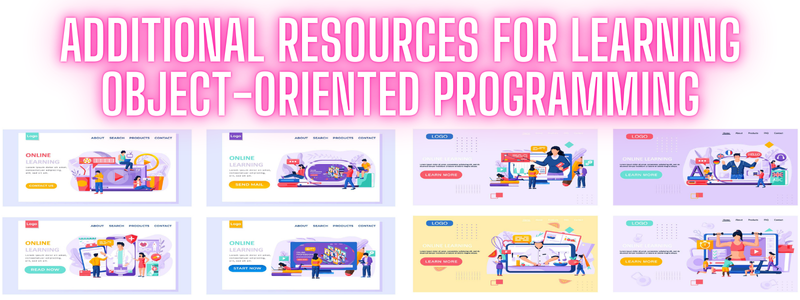
Learning Object-Oriented Programming (OOP) can be enhanced through various resources, including books, online courses, tutorials, and interactive platforms. Here are some recommended resources:
Books
- “Object-Oriented Design and Patterns” by Cay S. Horstmann
A great introductory book that covers the basics of OOP and design patterns. - “Head First Object-Oriented Analysis and Design” by Brett D. McLaughlin, Gary Pollice, and David West
This book uses a visually rich format to explain OOP concepts and design patterns. - “Design Patterns: Elements of Reusable Object-Oriented Software” by Erich Gamma, Richard Helm, Ralph Johnson, and John Vlissides (Gang of Four)
This is a classic book on design patterns in OOP, providing solutions to common software design problems.
Online Courses
- Coursera: Offers courses from top universities like Stanford and MIT, specifically on object-oriented programming. (Coursera WebSite)
- edX: Provides free and paid courses on OOP concepts, often with practical exercises. (edX WebSite)
- Udemy: Has a variety of courses on OOP in different languages, such as Java, Python, and C++. (Udemy WebSite)
Interactive Platforms
- Codecademy
Offers courses in various languages (Java, Python, C++) with a strong focus on OOP concepts. - Khan Academy
Provides an introduction to programming with JavaScript, including OOP principles. - LeetCode
While primarily a coding challenge platform, it provides problems that can help reinforce OOP concepts.
Tutorials and Articles
- Mozilla Developer Network (MDN)
Detailed documentation and tutorials on OOP in JavaScript. - GeeksforGeeks
Articles and tutorials covering OOP concepts in multiple languages like Java, Python, and C++. - Real Python
Offers in-depth tutorials on OOP in Python.
YouTube Channels
- Corey Schafer
Tutorials on Python programming, including OOP principles. - The Net Ninja
Comprehensive tutorials on web development and JavaScript, including OOP concepts. - Traversy Media
Covers a wide range of programming topics, including OOP in JavaScript and other languages.
By combining these resources, you can gain a comprehensive understanding of OOP principles and their applications across different programming languages.
Popular Object-Oriented Programming Languages
Now it’s time for the best object-oriented programming languages. I explained these languages in detail. I’ve also included a list below where I compare object-oriented programming languages. I wish you pleasant reading.

Java
Overview: Java is a versatile, high-level programming language developed by Sun Microsystems (now owned by Oracle). It is designed to be platform-independent, meaning code written in Java can run on any device with a Java Virtual Machine (JVM).
Key Features:
- Platform Independence: Write Once, Run Anywhere (WORA) capability due to the JVM.
- Strong Typing: Static type checking at compile-time.
- Rich API: Extensive libraries and frameworks, such as Java Standard Edition (SE), Java Enterprise Edition (EE), and Spring.
- Robust Security: Built-in security features to protect against threats.
Uses:
- Enterprise applications
- Web applications
- Android app development
- Scientific computing
Advantages:
- Mature ecosystem with a large community and support.
- Strong performance with Just-In-Time (JIT) compilation.
- Extensive documentation and tools.
Disadvantages:
- Verbose syntax can lead to boilerplate code.
- Slower startup time compared to some other languages.

C++
Overview: C++ is an extension of the C programming language with object-oriented features. It is known for its performance and control over system resources, making it a popular choice for high-performance applications.
Key Features:
- Low-Level Manipulation: Access to hardware and memory management.
- Multiple Inheritance: Allows a class to inherit from more than one base class.
- Standard Template Library (STL): Provides generic classes and functions.
Uses:
- System/software development
- Game development
- Real-time simulations
- High-performance applications
Advantages:
- High performance and efficiency.
- Rich library support.
- Flexibility in programming paradigms (procedural, object-oriented, generic).
Disadvantages:
- Complex syntax and steep learning curve.
- Manual memory management can lead to errors.

Python
Overview: Python is a high-level, interpreted language known for its simplicity and readability. It supports multiple programming paradigms, including object-oriented programming, functional programming, and procedural programming.
Key Features:
- Easy Syntax: Clean and readable syntax.
- Dynamic Typing: Type checking is done at runtime.
- Comprehensive Standard Library: Includes modules and packages for various tasks.
Uses:
- Web development (e.g., Django, Flask)
- Data analysis and machine learning (e.g., Pandas, TensorFlow)
- Scripting and automation
- Scientific computing
Advantages:
- High productivity and ease of learning.
- Extensive support for libraries and frameworks.
- Active community and strong support for integration with other languages.
Disadvantages:
- Slower execution speed compared to compiled languages.
- Global Interpreter Lock (GIL) can limit multi-threaded performance.

C#
Overview: C# is a language developed by Microsoft as part of its .NET framework. It is designed for building Windows applications and is known for its simplicity and robustness.
Key Features:
- Integrated with .NET: Provides access to the .NET Framework and its vast libraries.
- Modern Syntax: Combines elements from C++ and Java.
- Automatic Memory Management: Garbage collection to manage memory.
Uses:
- Windows applications
- Game development with Unity
- Web applications (ASP.NET)
- Cloud-based applications
Advantages:
- Strong integration with Microsoft technologies.
- Good support for modern programming features (LINQ, async/await).
- Rich development environment in Visual Studio.
Disadvantages:
- Limited cross-platform support compared to some other languages.
- Less flexible for non-Windows environments.

Ruby
Overview: Ruby is known for its focus on simplicity and productivity. It is often associated with the Ruby on Rails web framework, which emphasizes convention over configuration and rapid development.
Key Features:
- Elegant Syntax: Designed to be intuitive and enjoyable to write.
- Dynamic Typing: Types are checked at runtime.
- Metaprogramming: Allows code to be generated dynamically.
Uses:
- Web development (Ruby on Rails)
- Scripting
- Prototyping
- DevOps automation
Advantages:
- Highly readable and maintainable code.
- Rapid development with Rails framework.
- Strong focus on developer happiness and productivity.
Disadvantages:
- Slower runtime performance compared to compiled languages.
- Less suitable for high-performance applications.

Swift
Overview: Swift is Apple’s programming language designed for iOS, macOS, watchOS, and tvOS development. It aims to be fast, modern, and safe.
Key Features:
- Performance: High performance with LLVM compiler technology.
- Safety: Designed to eliminate common programming errors.
- Interoperability: Can work with existing Objective-C code.
Uses:
- iOS and macOS application development
- Server-side development with frameworks like Vapor
- Cross-platform development with SwiftUI
Advantages:
- Modern syntax and easy-to-read code.
- Strong safety features and performance.
- Active development with frequent updates.
Disadvantages:
- Limited support for older versions of macOS and iOS.
- Smaller ecosystem compared to more established languages.

PHP
Overview: PHP is a server-side scripting language primarily used for web development. It has evolved to include robust object-oriented features, making it a powerful tool for creating dynamic and complex web applications.
Key Features:
- Ease of Integration: Works well with various databases and web servers.
- Rich Ecosystem: Numerous frameworks (e.g., Laravel, Symfony) and a large community.
- Dynamic Typing: Types are checked at runtime.
Uses:
- Web development (server-side scripting)
- Content Management Systems (e.g., WordPress, Joomla)
- E-commerce platforms (e.g., Magento)
Advantages:
- Large support community and extensive documentation.
- Quick to deploy and easy to learn.
- Flexible and suitable for rapid development.
Disadvantages:
- Historically criticized for security vulnerabilities.
- Inconsistent language design and function naming.

Kotlin
Overview: Kotlin is a modern, statically typed language developed by JetBrains. It is designed to be fully interoperable with Java while improving upon many of its shortcomings.
Key Features:
- Interoperability: Seamlessly integrates with Java code and libraries.
- Concise Syntax: Reduces boilerplate code compared to Java.
- Null Safety: Provides built-in null safety features to prevent null pointer exceptions.
Uses:
- Android app development
- Server-side applications
- Web development with frameworks like Ktor
Advantages:
- Modern language features and syntax.
- Strong support for functional programming.
- Active development with growing community support.
Disadvantages:
- Smaller ecosystem compared to Java.
- Learning curve for developers transitioning from Java.

Scala
Overview: Scala is a hybrid programming language that combines object-oriented and functional programming paradigms. It is designed to be concise and expressive, running on the Java Virtual Machine (JVM).
Key Features:
- Functional Programming: Supports immutability and higher-order functions.
- Interoperability: Works with Java libraries and frameworks.
- Type Inference: Reduces the need for explicit type declarations.
Uses:
- Web applications (e.g., Play Framework)
- Big data processing (e.g., Apache Spark)
- Distributed systems
Advantages:
- Combines object-oriented and functional programming benefits.
- Concise and expressive syntax.
- Strong support for concurrency and parallelism.
Disadvantages:
- Steeper learning curve due to advanced features.
- Can be challenging to debug due to complex abstractions.

TypeScript
Overview: TypeScript is a superset of JavaScript that adds static typing and other features to enhance JavaScript development. It compiles down to plain JavaScript, making it compatible with existing JavaScript codebases.
Key Features:
- Static Typing: Provides optional static types to catch errors at compile-time.
- Type Inference: Automatically infers types where explicit annotations are not provided.
- Enhanced IDE Support: Improved code navigation and refactoring tools.
Uses:
- Web development (front-end and back-end with frameworks like Angular)
- Large-scale JavaScript applications
- Server-side development (e.g., Node.js)
Advantages:
- Improves code quality and maintainability.
- Interoperable with existing JavaScript code.
- Strong community and tooling support.
Disadvantages:
- Adds a compilation step to the development process.
- Can introduce complexity with type definitions.

Javascprit Object-Oriented Programming Language
JavaScript
Overview: Last but certainly not least, we have JavaScript – my personal favorite programming language. JavaScript is a high-level, interpreted language that is essential for web development. Initially designed to add interactivity to web pages, it has evolved to include robust object-oriented programming features, especially with the introduction of ES6 and beyond.
Key Features:
- Dynamic Typing: Types are checked at runtime, with flexibility in type assignments.
- Prototype-Based Inheritance: Uses prototypes rather than classes for inheritance.
- Asynchronous Programming: Supports asynchronous operations with promises and async/await.
Uses:
- Web development (client-side scripting)
- Server-side development with Node.js
- Mobile app development with frameworks like React Native
- Desktop applications with Electron
Advantages:
- Ubiquity across web browsers and platforms.
- Extensive ecosystem with libraries and frameworks (e.g., React, Angular, Vue).
- Active community and continuous evolution with ECMAScript updates.
Disadvantages:
- Inconsistent Behavior: Can vary across different web browsers, leading to compatibility issues.
- Dynamic Typing Issues: Runtime errors can occur due to lack of type safety, making debugging challenging.
- Performance Limitations: May struggle with performance in CPU-intensive tasks compared to compiled languages.
You may also like this 👉 What is Javascript and How to Learn it Easily?
Comparing Object-Oriented Programming Languages
To make an informed choice about which object-oriented programming language to use, it’s helpful to compare the languages based on their features, strengths, and ideal use cases. Here’s a comparative overview of the languages discussed:

| Language | Key Features | Strengths | Ideal Use Cases |
|---|---|---|---|
| Java | Platform independence, strong typing, rich API | Mature ecosystem, strong performance, extensive libraries | Enterprise applications, Android development, web applications |
| C++ | Low-level manipulation, multiple inheritance, STL | High performance, flexibility, rich library support | System/software development, game development, real-time simulations |
| Python | Easy syntax, dynamic typing, comprehensive standard library | High productivity, ease of learning, strong community support | Web development, data science, scripting, automation |
| C# | Integration with .NET, modern syntax, automatic memory management | Strong Microsoft technology integration, modern programming features | Windows applications, game development with Unity, web applications |
| Ruby | Elegant syntax, dynamic typing, metaprogramming | Readable and maintainable code, rapid development | Web development (Ruby on Rails), scripting, prototyping |
| Swift | High performance, safety, interoperability with Objective-C | Modern syntax, strong performance, frequent updates | iOS and macOS application development, server-side development |
| PHP | Server-side scripting, ease of integration, dynamic typing | Large community, quick deployment, flexible for web development | Web development, CMS and e-commerce platforms |
| Kotlin | Interoperability with Java, concise syntax, null safety | Modern language features, seamless Java integration | Android development, server-side applications |
| Scala | Combines object-oriented and functional programming, type inference | Expressive syntax, strong concurrency support | Web applications, big data processing, distributed systems |
| TypeScript | Static typing, type inference, enhanced IDE support | Improved code quality, JavaScript compatibility, strong tooling | Web development, large-scale JavaScript applications, server-side development |
| JavaScript | Dynamic typing, prototype-based inheritance, asynchronous programming | Ubiquity across web browsers, extensive ecosystem, continuous evolution | Web development (client-side and server-side), mobile and desktop applications |

Choosing the Right Object-Oriented Programming Language 🧑💻
Selecting the appropriate object-oriented programming language involves evaluating several factors including project requirements, team expertise, and long-term goals. Here are some key considerations to help you choose the best language for your needs:
1. Project Requirements
- Web Development: If your focus is on web development, JavaScript and TypeScript are essential for front-end development, with PHP and Python also strong candidates for server-side scripting.
- Mobile Development: For iOS apps, Swift is the preferred choice, while Kotlin is recommended for Android development.
- Enterprise Solutions: Java and C# are robust choices for enterprise-level applications due to their strong typing, extensive libraries, and integration with large-scale frameworks.
2. Performance Needs
- High Performance: If your project requires high performance and low-level system access, C++ is a strong choice. For applications requiring a balance of performance and safety, Rust (not listed but relevant for performance-critical scenarios) can be considered.
- Flexibility and Productivity: Python offers high productivity and ease of use for less performance-critical applications, while JavaScript is ideal for dynamic, real-time web interactions.
3. Ecosystem and Libraries
- Rich Ecosystem: Languages like JavaScript, Python, and Java have extensive ecosystems with a wealth of libraries and frameworks that can accelerate development.
- Specific Use Cases: For specialized applications, consider languages with strong ecosystems in those areas, such as Scala for big data or Ruby for rapid web development with Rails.
4. Team Expertise
- Existing Skills: Choose a language that aligns with your team’s existing skills and expertise to reduce the learning curve and improve productivity.
- Training and Resources: Consider the availability of training resources and community support for the language to facilitate learning and problem-solving.
5. Future Maintenance
- Code Maintainability: Opt for languages and practices that promote clean, maintainable code. Languages like TypeScript and Java with their static typing systems can help prevent errors and improve code quality.
- Community and Support: A language with a strong community and active development is beneficial for long-term support and updates.
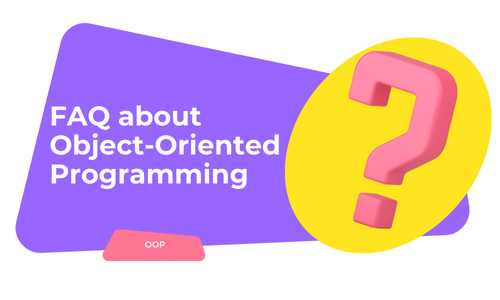
FAQ about Object-Oriented Programming❓
I have answered frequently asked questions about object-oriented programming languages below. You can see the answers by clicking on the questions. Before I forget, you can start from any question you want😁
What is Object-Oriented Programming (OOP)?
What are the main principles of OOP?
The main principles of OOP are:
- Encapsulation: Bundling data and methods that operate on the data within one unit, or class.
- Abstraction: Hiding complex implementation details and showing only the necessary features of an object.
- Inheritance: Creating new classes from existing ones, inheriting attributes and behaviors.
- Polymorphism: Allowing objects to be treated as instances of their parent class rather than their actual class, typically using method overriding and interfaces.
What is a class?
What is an object?
What is inheritance in OOP?
What is polymorphism?
What is encapsulation?
What is abstraction?
What are constructors?
What is method overriding?
What is an interface in OOP?
What is a destructor?
How does OOP differ from procedural programming?
What is the significance of the 'this' keyword?
Can a class implement multiple interfaces?
Object-oriented programming languages offer a range of features and benefits suited to various types of software development projects. By understanding the strengths and applications of languages like Java, C++, Python, JavaScript, and others, you can select the most appropriate tools for your needs. Embracing best practices and staying updated with evolving trends will help you build efficient, maintainable, and high-quality software solutions.
Continue exploring, learning and applying these principles with Algorithm Man to improve your programming skills and contribute to successful software development.
Thank you for sharing this Object-Oriented Programming Languages (OOP) guide with your friends. 😃




